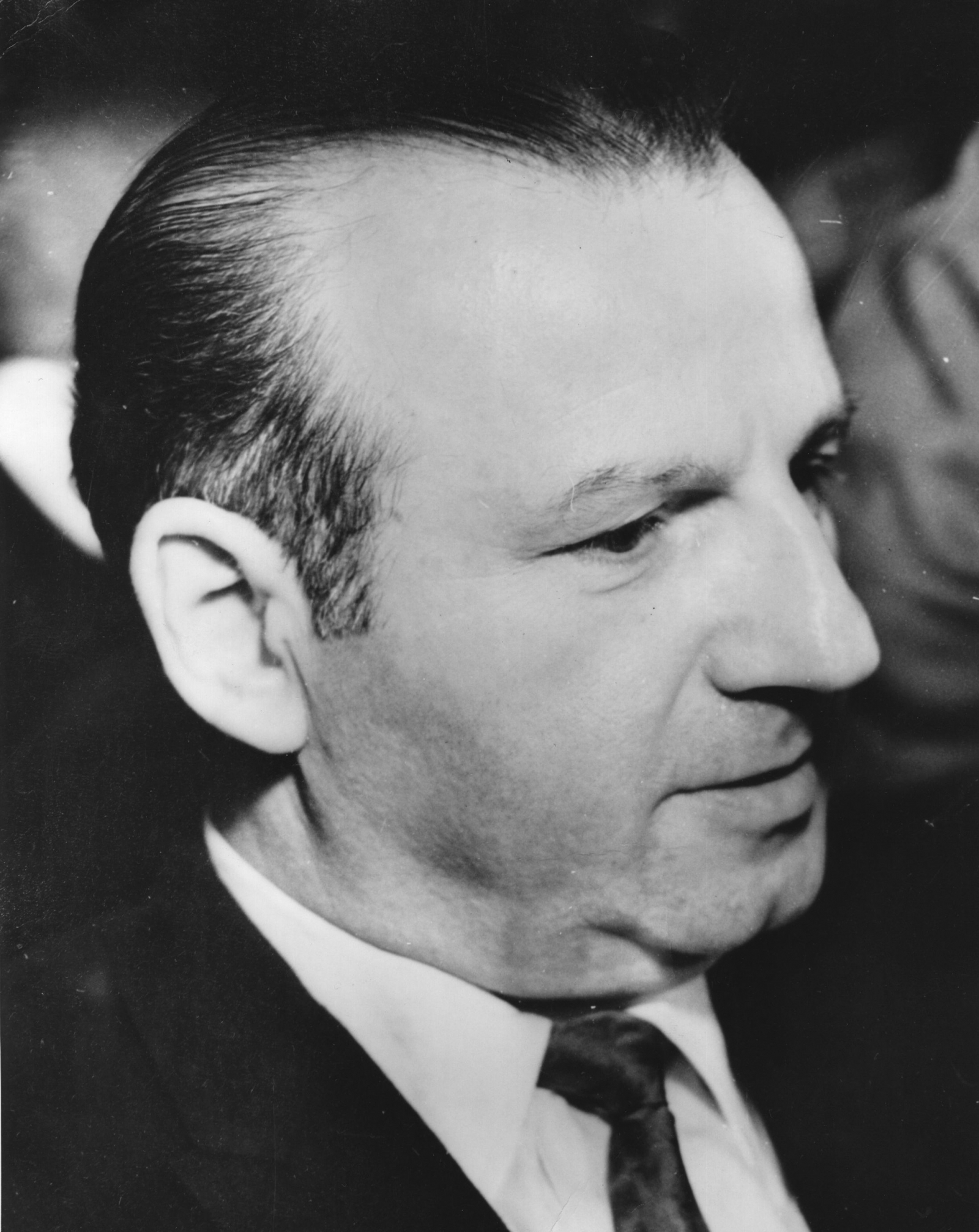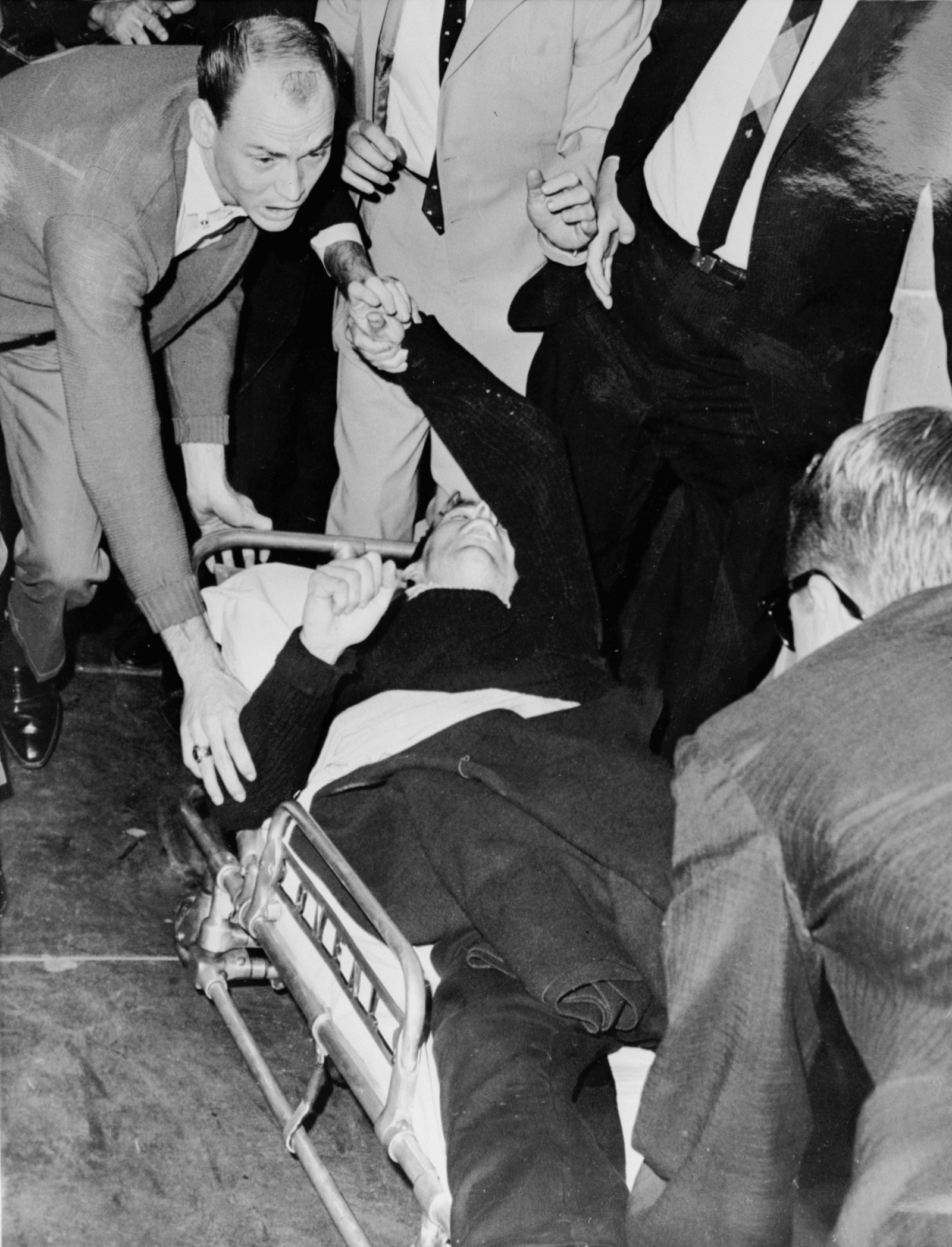Mafia hit man James Files says in interviews first aired nationally on Newsmax TV Thursday night that he worked along with major mob figures and fired the shot that killed Kennedy from the grassy knoll at Dealey Plaza in Dallas.
Friday, Nov. 22 marks the 51st anniversary of President John F. Kennedy's tragic assassination and Newsmax TV marked the occasion by airing the provocative premiere of the blockbuster documentary "I Killed JFK", featuring never-before-seen footage of Kennedy's confessed killer.
The documentary, produced by Hollywood’s Barry Katz, presents convincing forensic evidence supporting Files' contention that he, and not Lee Harvey Oswald, fired the fatal shot at America's 35th president.
"I squeezed off my round. I hit him and blew his head backward," Files said of the single shot he fired that fateful day.
"I Killed JFK" Executive Producer Barry Katz said: "Until now, no one has ever confessed to the murder of JFK, and most people still believe that Lee Harvey Oswald was the killer. After the world sees this special, I am confident that the greatest mystery of our generation will finally be solved."
Files, who changed his name from Jimmy Sutton, was born in Alabama in 1942, and after a stint in the Army became associated with both the Chicago mob and the CIA.
He worked under mobster Charles "Chuckie" Nicoletti, an underling of mob boss Sam Giancana. Giancana and other mobsters had been angered by the president’s brother, Robert, who as U.S. attorney general was targeting organized crime in a major prosecution effort.
Retired FBI Special Agent Zack Shelton appears in the documentary and reveals that he provided inside information to private investigator and Kennedy assassination investigator Joe West about Files possible connection to the Kennedy killing.
Two decades after the assassination, Files told West he would confess to Kennedy's killing in return for immunity from prosecution. West was negotiating on Files' behalf when he died in 1993.
Files is currently incarcerated at the Danville Correctional Center in Danville, Ill. He was convicted of the attempted murder of two police officers during a roadside shootout in 1991 and sentenced to 50 years in prison.
The documentary chronicles how Files, along with Nicoletti and mobster Johnny Roselli, came to be in Dallas on the day Kennedy was assassinated.
In his "I Killed JFK" interviews from prison, Files tells why he chose to position himself on the grassy knoll to await JFK's motorcade while another shooter took a different position.
"I've got the railroad yard in back of me," he said. "We got a parking lot there and I got a place where I could stash whatever I would need, and I could pass myself off as a worker in the railroad yard for the time being until the time comes and nobody would really pay any attention to me."
He worked under mobster Charles "Chuckie" Nicoletti, an underling of mob boss Sam Giancana. Giancana and other mobsters had been angered by the president’s brother, Robert, who as U.S. attorney general was targeting organized crime in a major prosecution effort.
Retired FBI Special Agent Zack Shelton appears in the documentary and reveals that he provided inside information to private investigator and Kennedy assassination investigator Joe West about Files possible connection to the Kennedy killing.
Two decades after the assassination, Files told West he would confess to Kennedy's killing in return for immunity from prosecution. West was negotiating on Files' behalf when he died in 1993.
Files is currently incarcerated at the Danville Correctional Center in Danville, Ill. He was convicted of the attempted murder of two police officers during a roadside shootout in 1991 and sentenced to 50 years in prison.
The documentary chronicles how Files, along with Nicoletti and mobster Johnny Roselli, came to be in Dallas on the day Kennedy was assassinated.
In his "I Killed JFK" interviews from prison, Files tells why he chose to position himself on the grassy knoll to await JFK's motorcade while another shooter took a different position.
"I've got the railroad yard in back of me," he said. "We got a parking lot there and I got a place where I could stash whatever I would need, and I could pass myself off as a worker in the railroad yard for the time being until the time comes and nobody would really pay any attention to me."
Shortly before the assassination, Files said, "I went back to the plaza, got my briefcase out with the gun in it. I went into the railroad yard, put it away where nobody could see it."
As the Kennedy motorcade entered the plaza and made a turn, the president's car cruised past a street sign in front of Files.
"That's when I started focusing through the scope. As far as I can see at this point the president has not been hit in the head. I've seen the body lurch. I know he's been hit. How serious I don't know.
"But my last instructions were we're going for head shots. If you have to take a shot take it, but don't fire unless you really have to.
"I was aiming at his right eye. When I pulled the trigger it was almost like looking from six feet away through the scope.
"As I squeezed his head moved forward. I missed and got it right along the temple, right behind the eye. I squeezed off my round. I hit him and blew his head backward. I fired one shot and one shot only.
"I never saw Mr. Nicoletti shoot Kennedy but I know he was the man in the building who was supposed to be doing the shooting.
"As I was leaving Dealey Plaza nobody tried to stop me. There were two police officers within 20, 25 feet of me. I didn't run. I just carried a natural gait and proceeded to exit, just like a businessman walking away from lunch."
Files, who received no compensation for the interviews, spoke of a shell casing he ejected from his gun.
"I took the shell casing. I bit down on it. I looked at it and set it on the stockade fence. There was an indentation from my teeth on the shell casing."
A man and his son discovered a casing of the same caliber in the area just behind where Files claimed he was positioned on the grassy knoll in 1987. The casing was buried four inches in the ground. A dental forensics expert confirmed that an indentation on the casing was made by human teeth.
Shelton is one of two former FBI agents who believe Files' story is credible.
He said: "I have tried to verify Files' story. A lot of that story I have been able to verify," including that a shot was fired from the grassy knoll "exactly where Files said he was standing."
As the Kennedy motorcade entered the plaza and made a turn, the president's car cruised past a street sign in front of Files.
"That's when I started focusing through the scope. As far as I can see at this point the president has not been hit in the head. I've seen the body lurch. I know he's been hit. How serious I don't know.
"But my last instructions were we're going for head shots. If you have to take a shot take it, but don't fire unless you really have to.
"I was aiming at his right eye. When I pulled the trigger it was almost like looking from six feet away through the scope.
"As I squeezed his head moved forward. I missed and got it right along the temple, right behind the eye. I squeezed off my round. I hit him and blew his head backward. I fired one shot and one shot only.
"I never saw Mr. Nicoletti shoot Kennedy but I know he was the man in the building who was supposed to be doing the shooting.
"As I was leaving Dealey Plaza nobody tried to stop me. There were two police officers within 20, 25 feet of me. I didn't run. I just carried a natural gait and proceeded to exit, just like a businessman walking away from lunch."
Files, who received no compensation for the interviews, spoke of a shell casing he ejected from his gun.
"I took the shell casing. I bit down on it. I looked at it and set it on the stockade fence. There was an indentation from my teeth on the shell casing."
A man and his son discovered a casing of the same caliber in the area just behind where Files claimed he was positioned on the grassy knoll in 1987. The casing was buried four inches in the ground. A dental forensics expert confirmed that an indentation on the casing was made by human teeth.
Shelton is one of two former FBI agents who believe Files' story is credible.
He said: "I have tried to verify Files' story. A lot of that story I have been able to verify," including that a shot was fired from the grassy knoll "exactly where Files said he was standing."
The documentary presents mounds of other evidence that Kennedy's assassination was not the work of a lone gunman and that Files' account is more credible than the official version put forth by the Warren Commission.
Files himself asserts: "Oswald never fired a shot."
"I Killed JFK" will re-broadcast on Newsmax TV on Friday, Nov. 21, at 11 p.m. and midnight EST, on Saturday at 2 a.m., 10 a.m., and 10 p.m. EST, on Sunday at midnight and 8 p.m. EST, and Monday at midnight EST.
Newsmax TV is America's fast-growing news and information channel, now carried in more than 35 million U.S. satellite and cable homes on DirectTV Ch. 349 and Dish Network Ch. 223.
Newsmax TV also is available online at newsmaxtv.com, via OTT devices and as a free Newsmax TV app on iPhone (iOS), Android and other smartphones.
Read Latest Breaking News from Newsmax.com http://www.Newsmax.com/Newsfront/john-kennedy-assassination-confession-mafia/2014/11/20/id/608736/#ixzz3KOWoyRxw
Files himself asserts: "Oswald never fired a shot."
"I Killed JFK" will re-broadcast on Newsmax TV on Friday, Nov. 21, at 11 p.m. and midnight EST, on Saturday at 2 a.m., 10 a.m., and 10 p.m. EST, on Sunday at midnight and 8 p.m. EST, and Monday at midnight EST.
Newsmax TV is America's fast-growing news and information channel, now carried in more than 35 million U.S. satellite and cable homes on DirectTV Ch. 349 and Dish Network Ch. 223.
Newsmax TV also is available online at newsmaxtv.com, via OTT devices and as a free Newsmax TV app on iPhone (iOS), Android and other smartphones.
Read Latest Breaking News from Newsmax.com http://www.Newsmax.com/Newsfront/john-kennedy-assassination-confession-mafia/2014/11/20/id/608736/#ixzz3KOWoyRxw









